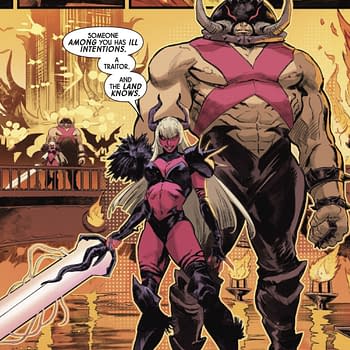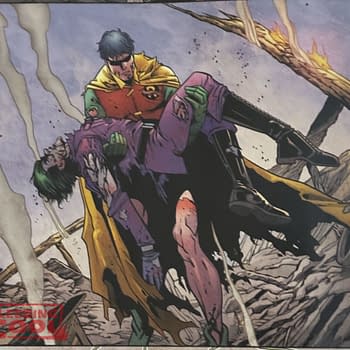Posted in: Comics | Tagged: Comics, Harbinger, valiant
Review: Harbinger #3
Louis Falcetti writes for Bleeding Cool;
Though I came of age in the 1990s I was not aware of Valiant comics. After all, I was only 10 years old when the first volume of Harbinger debuted and at that stage in my comic book development I only knew two things: that the X-men were awesome and that Batman was also awesome. So for all intents and purposes, though I'm an old comic book reader, the Valiant re-launch has placed me into that most coveted of all groups, that of the "new reader". The situation as it stands is humorous, for I've been witness to many a message board battle about what's the best way to get new readers on to a book and they almost always dissolve into people championing the erasure of confusing continuity versus the "catch as catch can and don't ruin it for the rest of us" clan. I honestly have no idea how much or little the current Harbingerconnects to the title of the 90s and I can happily say, from my "new reader" seat it completely does not matter.
Joshua Dysart is a writer who makes writing comics look easy. The way he's been pacing Harbinger, the way each issue so far has managed to maintain an unique enough feel to it so that as a reader you never feel like there's treading water going on. So far, Peter Stanchek has been picked up after escaping a mental institution with his friend Joe. Joe is actually crazy, Peter is not. They were tailed by a mysterious Mr. Tull (a lot of characters in Harbinger could be described as "the mysterious mr. ____) who at first seemed to be a droll, government suit but who actually works for, well, we don't know yet, and neither does he since Peter has wiped his mind so many times. That's because Peter is telepathic and telekinetic and in issue 2 when Toyo Harada lists off the likely capabilities of Peter, we realize that telepathy and telekinesis are just the tip of the iceberg. Toyo Harada is the head of the mysterious Harbinger Foundation which is either really, actually dedicated to saving the world through the development of super powered teenagers and owning everything or there's something really, really, really wrong going on.
After 2 issues of Peter floundering out in the open and making poor choice after poor choice (trust your crazy friend to take his meds? Brainwash a girl into falling in love with you? Rob a lot of pharmacies? Check, check, check.), Peter finally is brought in out of the cold though the welcoming he receives this issue is hardly warm. "WELCOME TO THE HARBINGER FOUNDATION PETER STANCHEK! I HOPE YOU SURVIVE THE EXPERIENCE!" no one shouted at all, but man if I wasn't thinking it. In fact this issue reminded me of classic Uncanny X-men in all the best of ways.
The Harbinger Foundation is global, so global that they have buildings waiting to be filled if ever the need should arise, in major cities around the world. Apparently also in less than major cities too, since now the Foundation has been relocated to Pittsburgh simply to accommodate the training of Peter Stanchek. He's special, like Toyo Harada himself he's someone who's powers required no external activation, a rarity in this world and something that definitely singles him out for abuse among his new peer group.
Now that Peter is a part of the Foundation more and more plot points are being revealed, such as a less than cheery prophecy involving Peter's future. Plus Peter himself isn't sure that he actually trusts all the groovy, earth affirming things he's hearing out of Harada's mouth. His new classmates seem harsh and his teachers seem cold. Peter is a character who just goes from frying pan to frying pan it seems. But therein lies some of the appeal. After all who wants to read a comic about someone who does everything right and never has any problems? This issue also made me wonder if Dysart is familiar with the film Chronicle, for I began to see similar characterizations between the two, at least as far as super powered teens who don't know what their doing goes.
Issue 3 is a great read, it shows that Dysart knows exactly how much backstory to give you and when and he does so with a smooth, deft hand making you feel like the characters backstories slip easily into the narrative rather than clunking around the pages as exposition heavy, long winded diatribes. Already story threads begun in the first two issues are showing us that everything is connected and has a purpose in this tale and that nothing is happening by whim. After all the bleeding monk knows what's going to happen, so if you want more spoilers you're going to have to talk to him.











